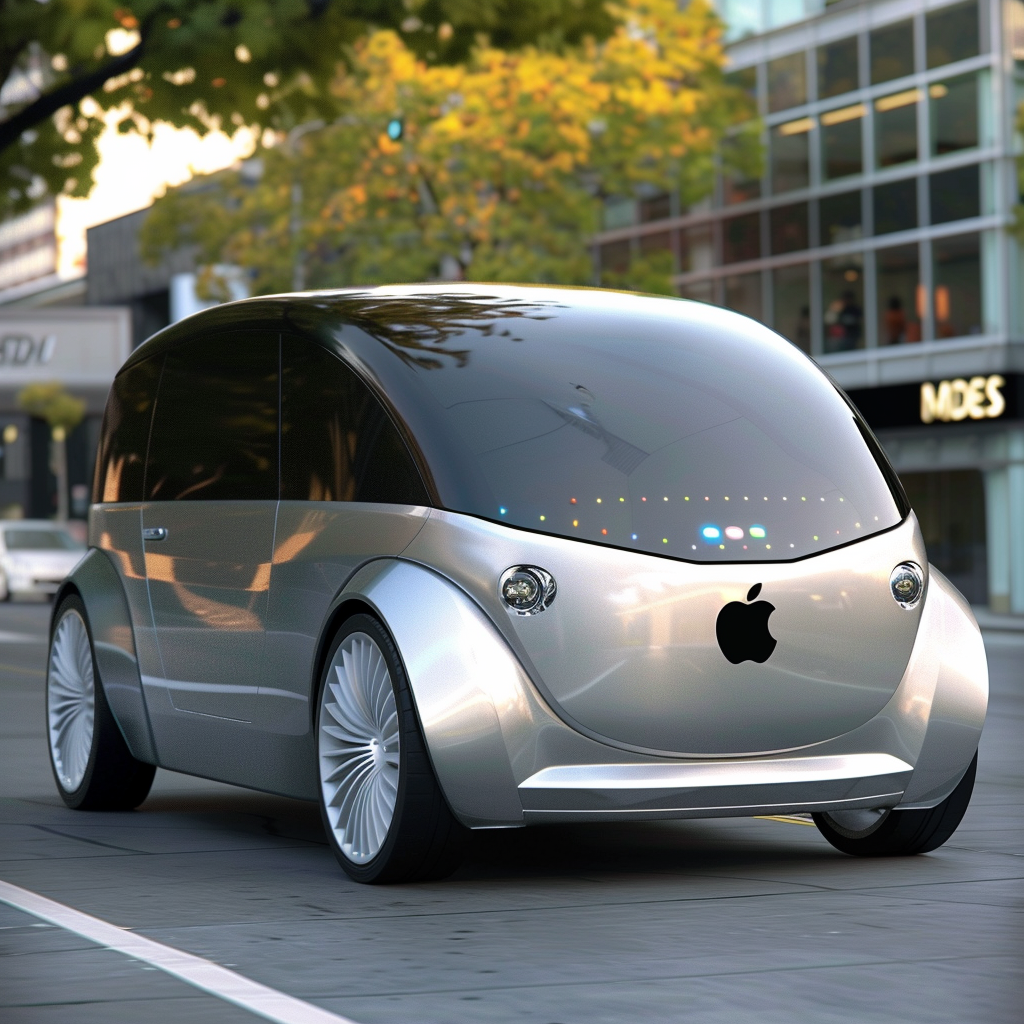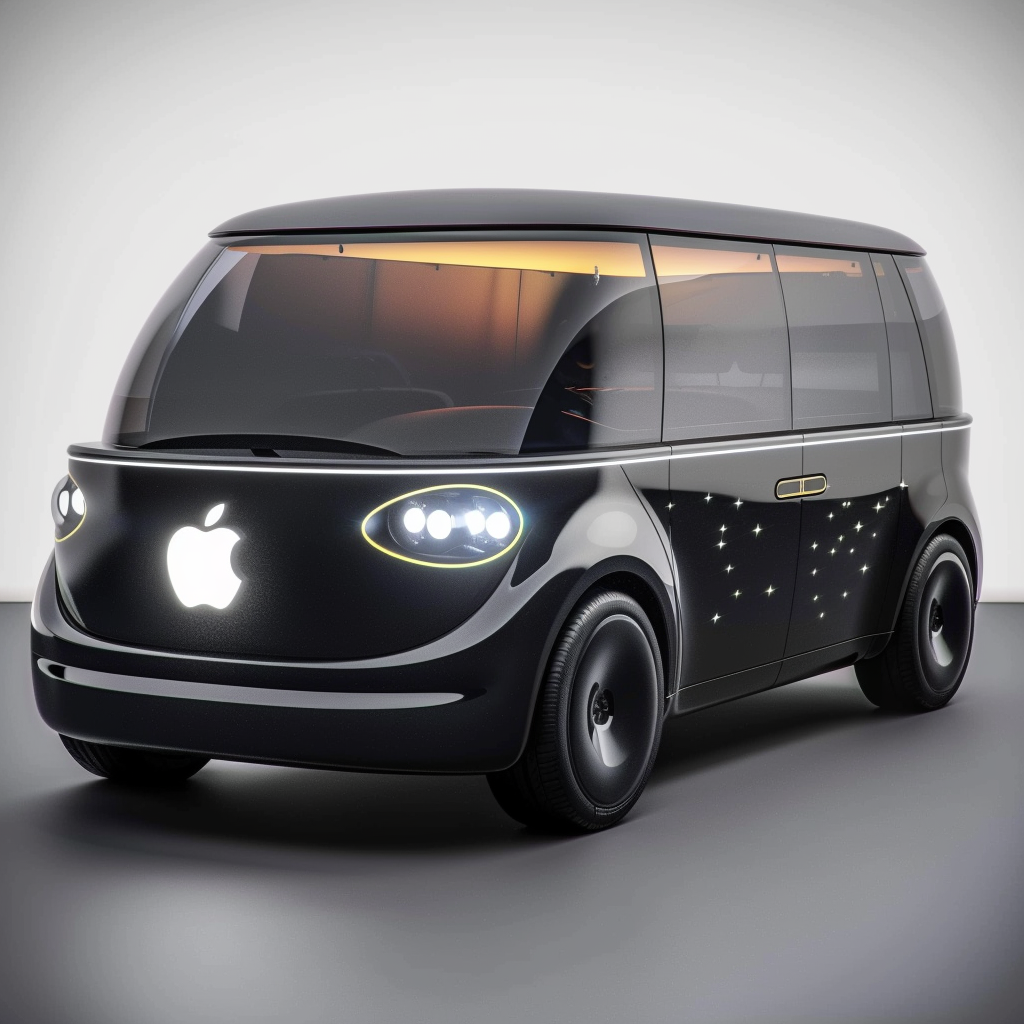"Boys, let's go build a car!"

Following some details a week ago from The New York Times, Mark Gurman and Drake Bennett were able to pull out even more about Apple's failed care project. At a high level, it further paints a picture of indecision mixed with bad timing. It would seem that a lot of people inside Apple thought they should make a car – perhaps because yes, at one point, Steve Jobs thought they should – but no one knew exactly how they should do it, not least of which, Tim Cook.
And, as previously discussed, a decade ago, there was a lot of optimism that we'd have fully self-driving cares everywhere by now. Instead, we have a lot driver-assistance technology mixed with a few sub-scale tests of more fully autonomous tech. It feels like everyone got about 80% of the way there, and this last 20% is going to take a long, long time. If it ever fully happens. As everyone knows, Apple isn't historically great about forging ahead in nascent markets and prefers to sit back and then enter with a killer product when the timing is right. Apple clearly got sick of waiting.
Some key tidbits:
Around the beginning of 2020, Apple Inc.’s top executives gathered at a former Chrysler testing track in Wittmann, Arizona, to try out the latest incarnation of the car the technology giant had been trying for years to make. The prototype, a white minivan with rounded sides, an all-glass roof, sliding doors and whitewall tires, was designed to comfortably seat four people and inspired by the classic flower-power Volkswagen microbus. The design was referred to within Apple, not always affectionately, as the Bread Loaf. The plan was for the vehicle to hit the market some five years later with a giant TV screen, a powerful audio system and windows that adjusted their own tint. The cabin would have club seating like a private plane, and passengers would be able to turn some of the seats into recliners and footrests.
Most important, the Bread Loaf would have what’s known in the industry as Level 5 autonomy, driving entirely on its own using a revolutionary onboard computer, a new operating system and cloud software developed in-house. There would be no steering wheel and no pedals, just a video-game-style controller or iPhone app for driving at low speed as a backup. Alternately, if the car found itself in a situation that it was unable to navigate, passengers would phone in to an Apple command center and ask to be driven remotely.
This strikes me as the wrong mixture of whimsical and complicated. Could you imagine being stuck in the car, trying to fix it with an Xbox controller, and ultimately having to call an Apple command center to help you out?
It was Steve Jobs who first floated the idea of a car at Apple. In the late 2000s, in a typically grand pronouncement, the company’s co-founder and CEO declared internally that Apple should have dominant technologies in all of the spaces in which people spent time: at home, at work and on the go. For many Americans, being in transit means being on the road, sometimes for hours a day. “We talked about what would be this generation’s new Volkswagen Beetle,” recalls Tony Fadell, who led mobile device engineering under Jobs. In the wake of the 2008 financial crisis, with American car companies on the brink of failure, the Apple chief executive even floated the idea of acquiring General Motors Co. for pennies on the dollar.
That scheme was quickly abandoned, in part because Apple decided it would be a bad look and in part because of the need to focus on the iPhone.
My god, could you imagine if Apple had bailed out GM? It probably would have been a disaster, but wow, what a different Apple we'd have right now.
While the initial prototypes operated like traditional cars, these supporters eventually pursued more radical redesigns, invoking a transportation technology experience they said would “give people time back.” The ultimate plan was a living room on wheels where people who no longer needed to drive their cars could work or entertain themselves with Apple screens and services instead.
To me, ultimately, this is the reason for Apple to do a car. It's not to create a better Tesla, it would be to create a truly innovative product in the space that could change people's lives. Time is our most valuable resource. Imagine if people had their time spent driving given back to them to do something else? This would be a safer and more productive (or at last more fun) world.
The infighting began almost immediately. Maestri, the CFO, remained a skeptic, as did Craig Federighi, Apple’s software engineering chief, who had to donate personnel to what he considered a vanity project. Jony Ive, Apple’s design chief at the time, was more ambivalent, pushing for full driving autonomy but also expressing doubts about the wisdom of the endeavor. Some car fans on the Apple leadership team, including the company’s marketing executives, were resistant to building a product that didn’t look and feel like a car. Services head Eddy Cue suggested that it might be more prudent to just try to make a better Tesla rather than invent an entirely new category of machine.
Too many cooks in the kitchen and too few Cooks – as in, Tim?
Perica, the mergers-and-acquisitions chief who’d pushed to buy Tesla, told the Apple car team that the company should build “the first bird,” not “the last dinosaur.”
I love that framing.
Under Ive, the microbus design emerged. The interior would be covered in stainless steel, wood and white fabric. Ive wanted to sell the car only in white and in a single configuration so it would be instantly recognizable, like the original iPod he’d designed.
Again, this is what we'd all imagine Apple to do here. Not some sort of slightly better Hyundai?
Talks with Mercedes-Benz progressed further. For a few months, Apple and the German automaker actively worked on a partnership similar to the Tesla idea, but with a twist. Mercedes would manufacture Apple’s vehicle, while it would also sell its own cars with Apple’s self-driving platform and user interface. Apple eventually pulled out, in part because the early work gave its executives confidence they could build a car on their own, people involved in the failed deal say.
This is actually an idea that may have made sense. Apple wanted to do it all from the get-go, but it's just too hard in this space. They should have partnered to start and over time built up their own capabilities – you know, like they've done in every other field they've entered. Unlike Hyundai or even Tesla, Mercedes feels like a natural Apple partner – not least of which because that's the car Steve Jobs drove.
At other points, Apple held exploratory acquisition talks with car companies beyond Tesla. The closest it got to a deal was with McLaren. Some Apple executives believed that scooping up the British automaker, which makes a few thousand cars by hand each year and sells them to the super rich, would excite Jony Ive, who’d scaled back his involvement at Apple after the launch of the Apple Watch, and reengage him with the company. The proposed deal, before it fell apart, would have provided Ive with a new design studio in London.
Talk about vanity project...
Before Mansfield persuaded Field, the former Tesla executive, to take over for him, he and Cook did manage to agree on an interim direction for the company’s autonomous driving efforts: a self-driving shuttle made in collaboration with Volkswagen for Apple employees to use at its new headquarters in Cupertino, California. That project didn’t come to fruition, either. It was seen as a distraction, and Field shut it down. He also eventually shuttered Apple’s work on batteries and other components he felt Apple could just buy off the shelf.
Literally nothing seemed to work.
Last year, Apple pivoted one last time. Designs were tweaked to move from Level 5 down to Level 2, the level of Tesla’s current Autopilot, which can control both speed and steering but is assistive technology for drivers rather than their replacement. In keeping with that, the new design also incorporated a more traditional automotive interface: a steering wheel and pedals. “They finally smartened up,” says an Apple executive. “I was like, ‘Guys, you could have done this 10 years ago!’”
Ouch. But at last, at least BMW can now officially sleep peacefully.




This is clearly what Gen-AI was built for...

